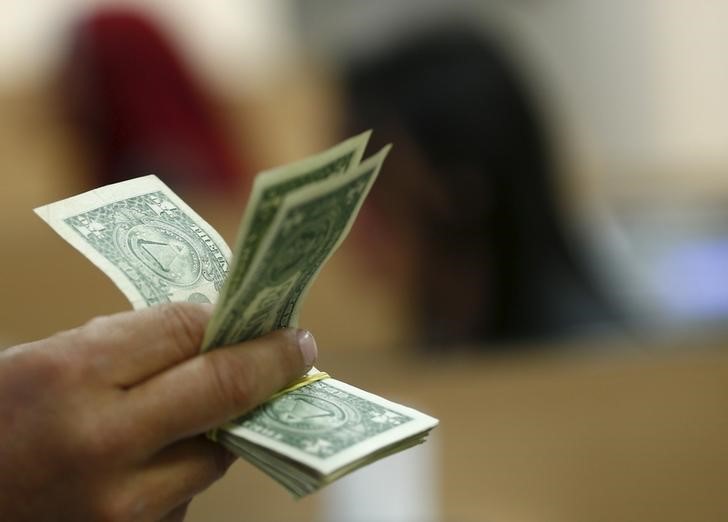Investing.com – The U.S. dollar slipped lower in early European hours Tuesday, trading near a more than one-year low as traders increasingly factor in a prompt end to the Federal Reserve’s tightening cycle.
At 02:55 ET (06:55 GMT), the , which tracks the greenback against a basket of six other currencies, traded 0.1% lower at 99.415, just above the 99.362 level seen earlier Tuesday, its lowest since April 2022.
The is widely expected to lift interest rates once more when it meets next week, but markets are focused on the end of the FOMC tightening cycle after registered their smallest annual increase in more than two years last week.
This resulted in the dollar recording its worst weekly performance in eight months, falling more than 2% against its major rivals.
U.S. retail sales, industrial production due
Markets were now awaiting the release of U.S. and data, due later in the day, for more clues on the health of the world’s largest economy, and the potential path of interest rates.
The retail sales reading for June is expected to have improved from the prior month, while industrial production growth is also expected to accelerate in June, pointing to some resilience in the U.S. economy.
That said, it’s debatable whether these numbers will change market sentiment given last week’s tepid consumer and .
“Last week’s U.S. disinflation shock altered the FX landscape, but a few days without key data releases will tell us whether that impulse can keep the dollar on the back foot as the FOMC risk event draws nearer,” said analysts at ING, in a note.
ECB, BOE still have more tightening to go
rose 0.2% to 1.1252, just below a fresh 17-month high, while rose 0.1% to 1.3089, not far from last week’s top of 1.3144, also its highest since April 2022.
Both the and the are widely expected to raise their respective benchmark interest rates again when they next meet, and are unlikely to stop their tightening cycle there.
The U.K. is to release June inflation data on Wednesday, and while the is expected to ease to 8.2% year-over-year from 8.7% in May, that is still over four times higher than the BOE’s inflation target rate.
Similarly, inflation levels in Germany, the largest economy in the euro one, rose in June to 6.8% on the year, when harmonized with other European Union countries.
Elsewhere, fell 0.3% to 138.37 ahead of the Bank of Japan’s next week, rose 0.1% to 0.6823, with the Australian dollar recovering some of the prior session’s steep losses.
traded flat at 7.1716, stabilizing after Monday’s hefty losses as traders look to the PBOC for more stimulus measures in the coming months.
Read the full article here








